Tajik Dishes: Basic Overview
Common Ingredients
Common Cooking Methods
Courses
Meals
Key Taste
Eating Etiquette
Meal Presentation
Culinary Festivals
Influence and Fusion
Popular Types of Tajik Dishes
-
Dumplings
Tajik dumplings often feature dough filled with spiced meats like lamb or beef.
They are typically boiled or steamed and served with yogurt or dipping sauces.
-
Cakes and Pastries
These range from sweet to savory, featuring flaky or doughy textures.
Popular fillings are meat (not suitable for vegans), cheese (suitable for vegetarians), or sweetened fruits (ideal for both vegan and vegetarian diets).
-
Rice Dishes
It is central to Tajik cuisine.
Dishes feature rice cooked in a seasoned broth, often with meat, vegetables, and sometimes dried fruits.
-
Bread and Doughs
Bread is a staple in every meal. They vary from flat to leavened types, often baked in traditional tandoor ovens.
However, most of them are not for gluten-free diets.
-
Noodle Soups
They are brothy noodle dishes, reflecting a blend of local and neighboring culinary influences.
-
Stews
Tajik stews often combine meat, vegetables, and spices, simmered slowly to develop deep flavors.
They are hearty and comforting.
-
Soups
These soups typically contain meat, legumes, vegetables, and sometimes noodles or rice.
-
Grilled and Barbecued Dishes
They are meat-based dishes, which are skewered and grilled.
These meat types are also seasoned with local spices and served with bread or salads.
Tajik Dishes: Signature Culinary Delights
-
Most Popular Dishes
They are beloved treats in the whole country, commonly found in homes or restaurants. -
National Dish
It refers to a dish that represents the country’s culinary identity. -
Traditional Dishes
These are traditional recipes that have been created for many generations.
They mirror Tajikistan’s cultural heritage, history, and cooking practices.
-
Street Food
They are popular for their accessibility and authentic taste.
Markets and street vendors are where to find these delights.
-
Fusion Dishes
Tajik cooking traditions combine other cuisines to create fusion recipes.
Tajik dishes refer to foods in Tajikistan, originating both within the country and elsewhere.
Many well-known dishes in Tajikistan are influenced by the cuisines of Uzbekistan, Russia (including the Soviet Union), Persia (Iran), and Afghanistan.
Famous Tajik dishes include qurutob, plov (pilaf), non (tandyr nan), laghmon (laghman), shurbo (chorba), manti, etc. Among them, qurutob and plov are considered Tajikistan’s national dishes.
There is a lively snack and street food scene in Tajikistan, with meat-filled pastries and grilled meat as traditional choices.
Many Tajik dishes are prepared for special occasions, such as weddings or Navrūz (local name for Nowruz – Persian New Year), a holiday celebrating the spring equinox.
Famous festive treats in Tajik cuisine include nauryz kozhe, çäkçäk, boortsog, samanu, and halvaitar.
Continue reading for more interesting facts about dishes in Tajikistan, including the influence of geography and history, the main ingredients, and the seasonality of the ingredients.
To help you understand more about local cuisine, I will give you an overview of Tajik dishes for standard meals, popular cooking methods and utensils, and eating etiquette in the country.
As you scroll down, don’t forget to use interactive filters or click on the Tajik dishes to explore the foods of this Central Asian country.
31 Most Popular Tajik Dishes with Filters
#1
in Tajikistan
#2
in Tajikistan
#3
in Tajikistan
#4
in Tajikistan
#5
in Tajikistan
#6
in Tajikistan
#7
in Tajikistan
#8
in Tajikistan
#9
in Tajikistan
#10
in Tajikistan
#11
in Tajikistan
#12
in Tajikistan
#13
in Tajikistan
#14
in Tajikistan
#15
in Tajikistan
#16
in Tajikistan
#17
in Tajikistan
#18
in Tajikistan
#19
in Tajikistan
#20
in Tajikistan
#21
in Tajikistan
#22
in Tajikistan
#23
in Tajikistan
#24
in Tajikistan
#25
in Tajikistan
#26
in Tajikistan
#27
in Tajikistan
#28
in Tajikistan
#29
in Tajikistan
#30
in Tajikistan
#31
in Tajikistan
Tajik Dish Images
How Do Geography and History Influence Tajik Dishes?
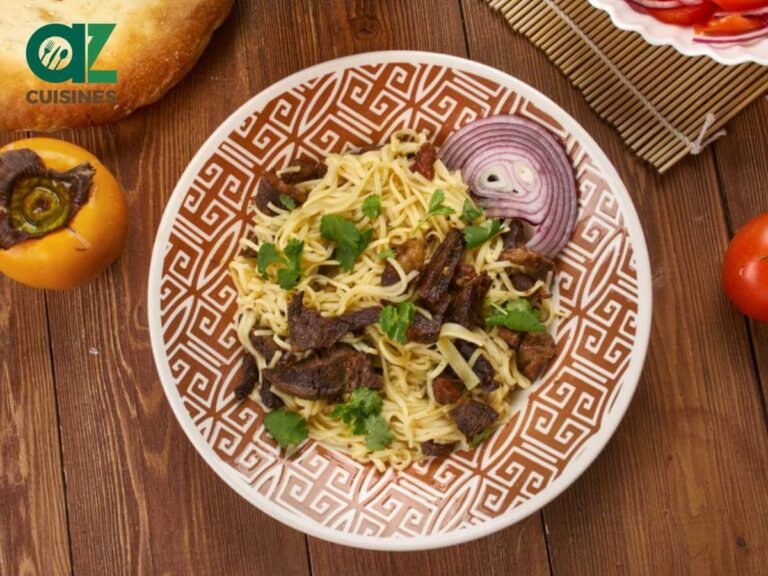
Geography and history play a vital part in shaping Tajik foods. Allow me to show you how.
Terrain
Mountains cover most of Tajikistan’s terrain, which, coupled with the harsh climate, favors livestock over crop farming. Therefore, meat and dairy products are more popular here.
Nevertheless, certain vegetables grow well in this Central Asian country, complementing the diet with fiber and carbs.
Geographical Location
Tajikistan’s proximity to Russia, Afghanistan, Uzbekistan, and Kyrgyzstan facilitates the culinary exchanges between Tajikistan and those countries.
In addition, Tajikistan was historically part of the Silk Road, which brought a mix of culinary influences from various cultures.
Persian Influence
Tajikistan was once part of the Persian empires, such as the Samanid Empire, so it was considerably influenced by Persian cuisine.
Many Tajik dishes, from hearty entrees to sweet desserts, have their roots in Persia. Navrūz is the most important holiday in the country.
Russian and Soviet Influence
Russian cuisine has introduced many new dishes and cooking ideas to Tajikistan. Some modern restaurants serve a mix of Russian and European foods.
During the Soviet era, Tajikistan was exposed to foods and culinary styles from other parts of the USSR.
Islamic Dietary Law
The majority of Tajiks are Muslim, making halal food a standard. An obvious example is the avoidance of pork.
What type of meat do Tajiks eat if pork is out of the question? Read on to discover the main ingredients in Tajik cuisine!
What Are the Main Ingredients in Tajik Dishes?
Tajik cuisine mainly revolves around the following ingredient groups.
Meat
Meat-centric dishes in Tajik cuisine often use lamb. Goat meat is also popular, while some people also cook with horse meat.
Beef and chicken are featured in a few dishes but are less prevalent than the other three types of meat above.
The indigenous fat-tailed sheep has a large amount of delicious fat in its tail, providing a source of animal fat for many Tajik dishes.
Grains
Wheat and hardy crops, such as barley, are the principal grain varieties in Tajikistan. Their main application is to produce flour to bake bread and pastries.
Rice is mostly utilized to prepare plov. Tajiks have a deep fondness for the native devzira rice variety.
Dairy Products
In Tajikistan, fermented products made from milk, such as dried or strained yogurt, are usually consumed as snacks or food ingredients.
Locals also enjoy sour cream, an adaptation of Russian cuisine.
Nuts
Many Tajiks enjoy nuts as a snack or use them to garnish traditional dishes, especially plov.
Fruits and Vegetables
Melons, pears, berries (grapes), and stone fruits (peaches, plums, and peaches) from Tajikistan and other Central Asian countries are internationally famous.
Apricots are another delight; dried apricots appear in many local dishes, especially plov.
Vegetables are mainly used in Tajik soups and stews. Local cuisine has a preference for tubers (potatoes), bulb vegetables (onions), and root vegetables (radish and carrots).
Due to the climate conditions, Tajikistan’s fruits and vegetables vary significantly between the seasons.
How Are Ingredients Impacted By Season in Tajikistan?
Many popular food ingredients in Tajik cuisine, especially fruits and vegetables, significantly depend on the seasons.
Tajikistan’s famous fruits and vegetables are at their most abundant in spring and summer, resulting in traditional Tajik dishes laden with these ingredients.
For example, dimlama, known in English as harvest stew, consists of meat and various seasonal vegetables.
The seasonality of the ingredients is an essential feature of classic Tajik dishes for a typical meal.
What Is A Typical Meal Like in Tajikistan?
Depending on the time of the day, a standard meal in Tajikistan has the following characteristics:
Popular Bread
Non (traditional flatbread) is a must-have component of any Tajik meal. Thick pieces of non are commonly used as a base or a “plate” for other dishes.
Main Meals
A typical Tajik breakfast pairs bread with sausage, butter, yogurt, jam, eggs, or fruits. Lunch and dinner are heartier, with soups, stews, salads, and noodle dishes.
Sweet Course
Tajiks enjoy sweets between meals. These treats are exceptionally rich and of Persian or Arabian origin.
Common Ingredients
Soups and stews in Tajikistan are rich and nutritious, consisting of a large amount of meat, vegetables, and dairy products.
Many dishes involve frying the ingredients in lamb fat for extra richness.
Salads or appetizers made with fresh produce are usually served to balance the flavor experience. Stuffed dishes made from vegetables are also popular.
Representation of Cuisine
Communal meals usually feature shareable dishes like plov and qurutob are ideal choices, demonstrating how much Tajiks value the spirit of community.
Tajiks employ many traditional cooking methods and utensils to prepare dishes for their meal. Let’s find out what they are.
What Are Traditional Cooking Methods in Tajik Dishes?
Below is a breakdown of the most popular cooking methods in traditional Tajik cuisine.
- Boiling: Tajiks frequently cook food or prepare ingredients through boiling.
- Simmering: Tajik cuisine often involves simmering and similar techniques, allowing flavors to develop over time.
- Baking: Baking is the standard cooking method for bread, a staple in Tajikistan, and many traditional pastries.
- Grilling: Many traditional Tajik dishes, especially meat-based ones, are grilled to impart a distinct smoky flavor to the food.
- Fermenting: Allowing bacteria to ferment the milk is the common way to make fermented dairy products in Tajikistan.
Next, why don’t you delve into popular utensils people use to serve traditional foods in Tajikistan?
What Are Traditional Utensils in Tajik Dishes?
Here is a short list of utensils commonly used in traditional Tajik cuisine.
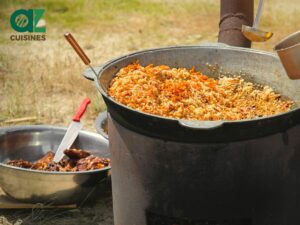
Kazan
Kazan is a large, heavy pot typically made of cast iron. Popular throughout Central Asia, it’s suitable for many cooking methods, such as sautéing, deep-frying, boiling, simmering, and even baking.
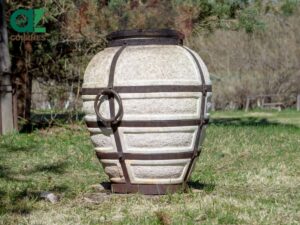
Tandoor
Tandoor, known locally as tanur or tandyr, is a cylindrical clay oven used for baking bread and cooking meat. The heat in a tandoor comes from a wood or charcoal fire at the bottom.

Spoons
Although people in Tajikistan usually eat with their hands, they also use spoons (made from wood or metal) to serve various dishes. Foreign tourists can be provided with forks for eating.
Do you find that some common utensils, such as knives, are missing? There are many interesting rules of etiquette that explain their absence!
What Is Eating Etiquette in Tajikistan?
Tajikistan’s basic table manners consist of the following rules.
Seating
Seating arrangements might be on the floor around a low table called a dastarkhan. Elders and guests of honor are typically given the best seats.
Handwashing
Before and after the meal, it’s customary to wash hands. In traditional settings, a basin and jug are often brought to guests.
Tea and Sweets
Traditionally, a Tajik host serves guests green or black tea and sweet snacks (such as fruits and pastries) before moving on to the main course.
Serving and Eating
Guests and senior members of the family are typically served first, but it’s polite to wait for the host to start eating.
You can finish everything on your plate, but leaving a little food can indicate that you are satisfied and that the host has provided enough food.
Refusing food can be seen as rude, but you can be excused if you have dietary restrictions.
Bread Consumption
Non and other types of bread have a special status in Tajik consciousness. Wasting bread is an absolute no, and even bread crumbs aren’t carelessly discarded.
Tajikistan has a few bread taboos, such as placing a loaf of bread upside down, throwing it away, tossing it around, or dropping it on the ground.
Cutting the bread with a knife is also prohibited; you have to tear the bread by hand.
You nearly know everything about Tajiki dishes now; check out the FAQs to complete your understanding!


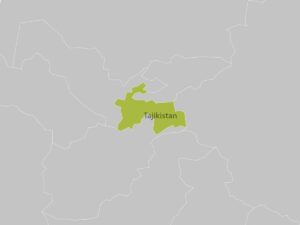
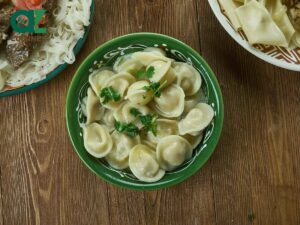


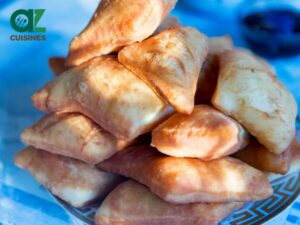
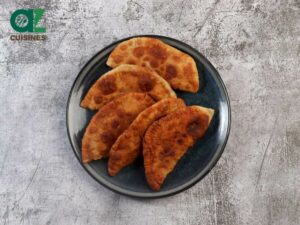
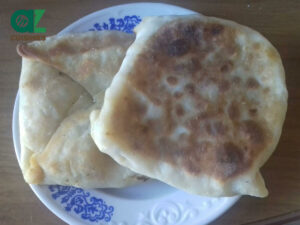


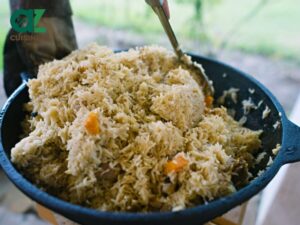
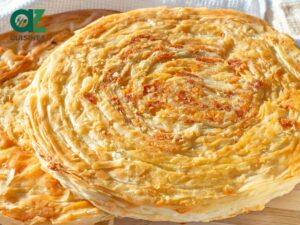
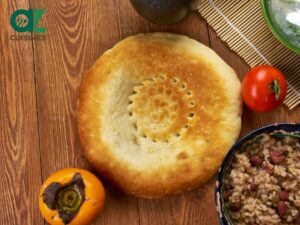
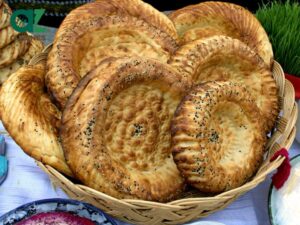
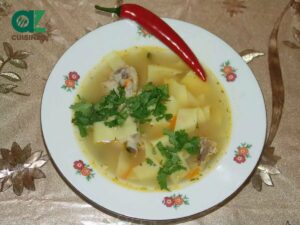
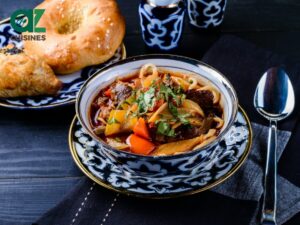

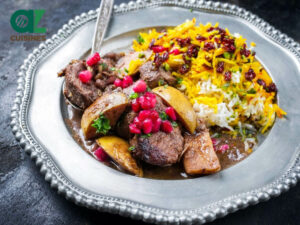
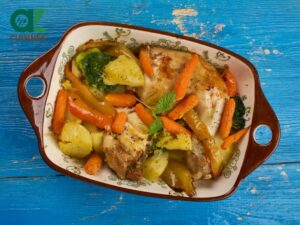
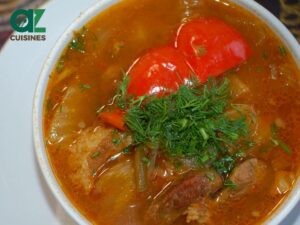
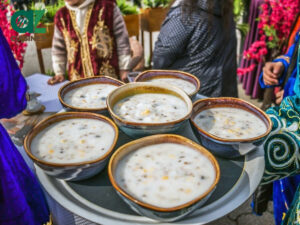
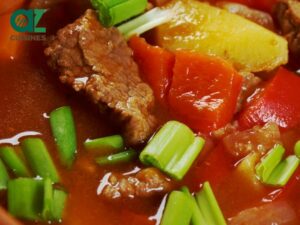
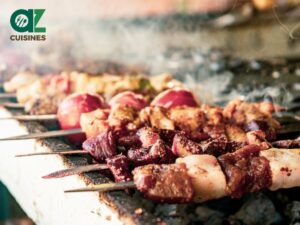
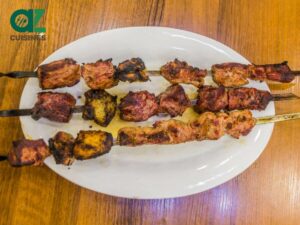

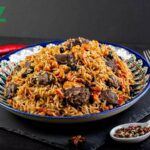

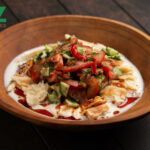

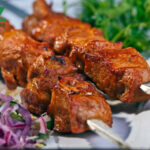
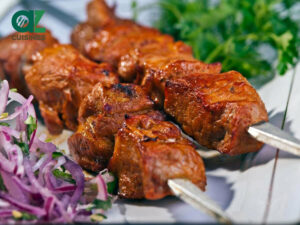

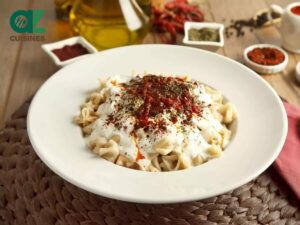
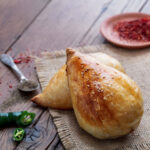
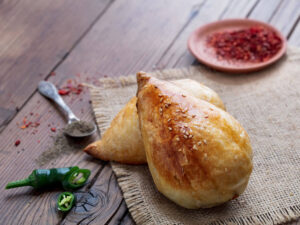
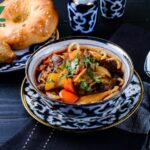
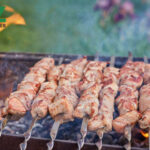

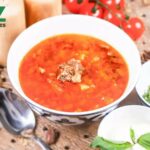
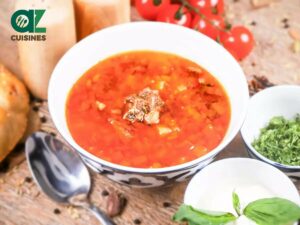

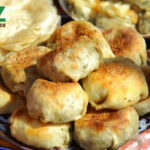
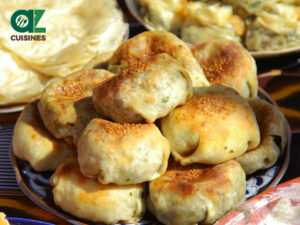


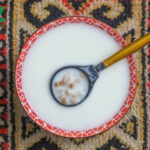
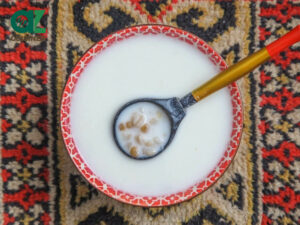
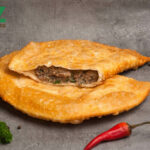
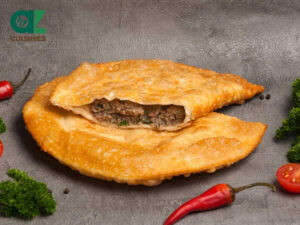


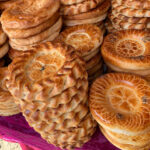
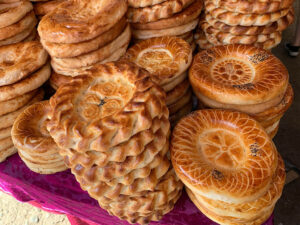
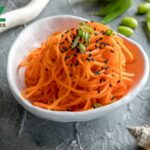
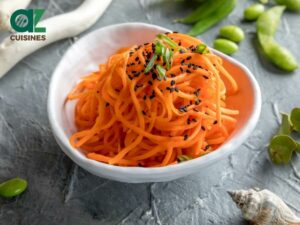
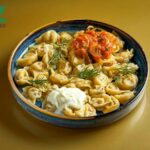
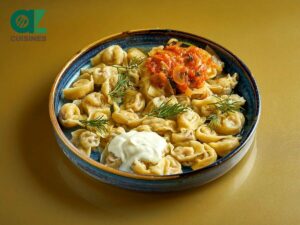

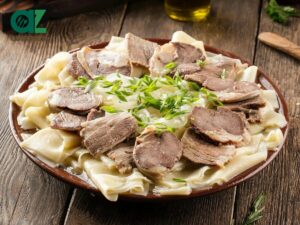

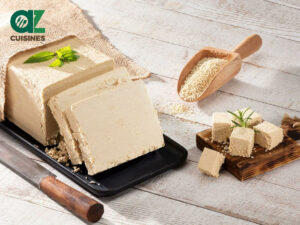

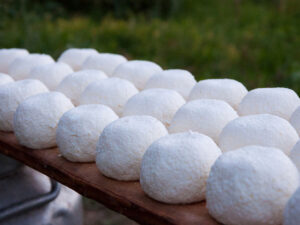
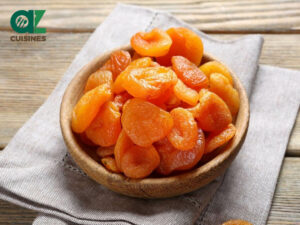
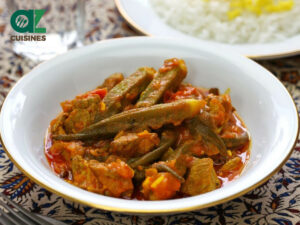
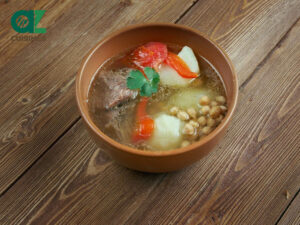


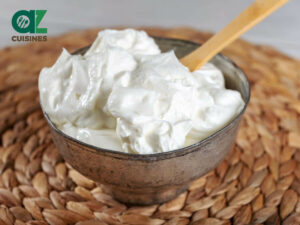
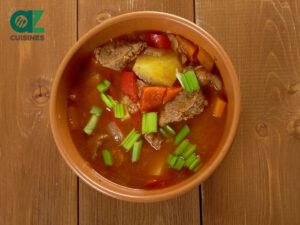
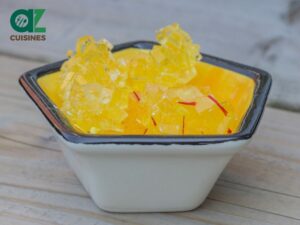
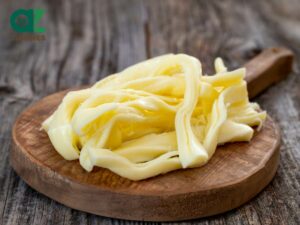

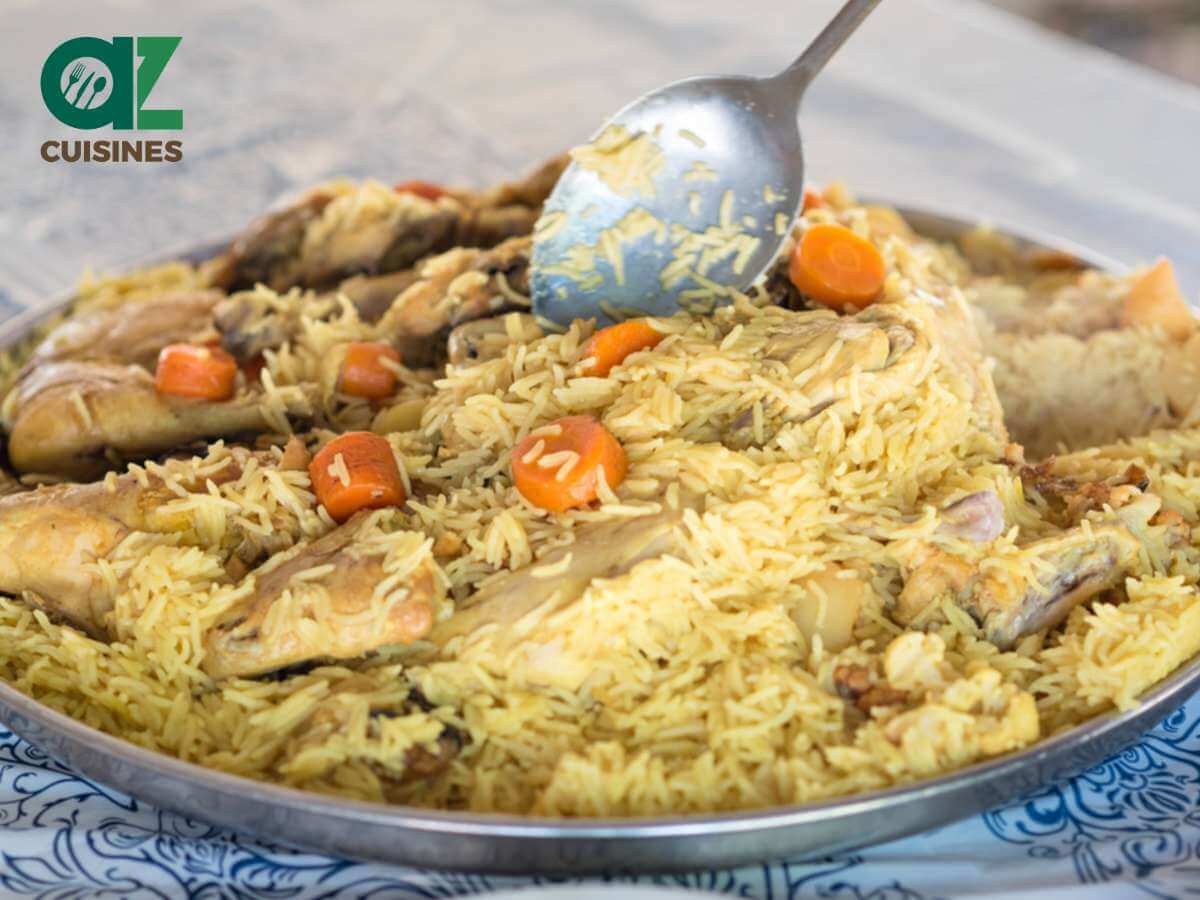
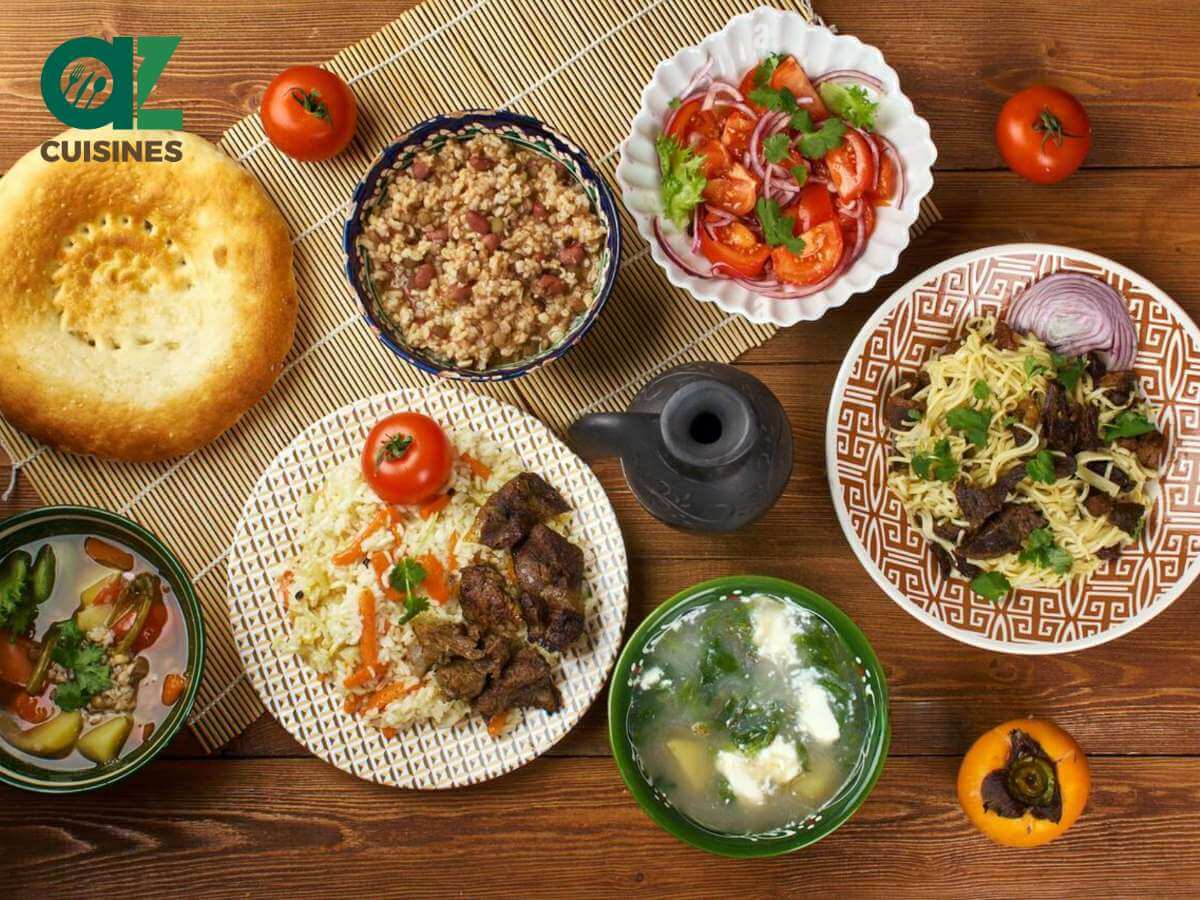

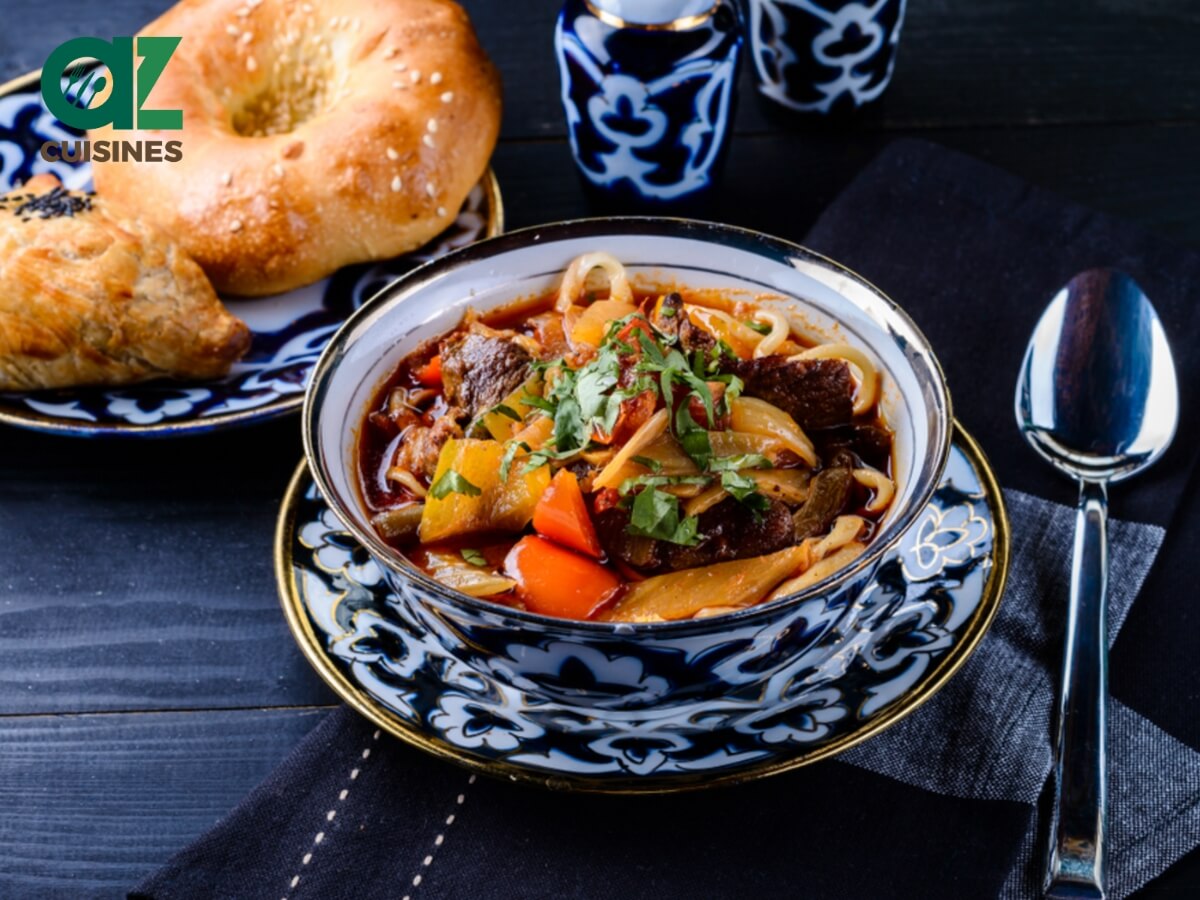

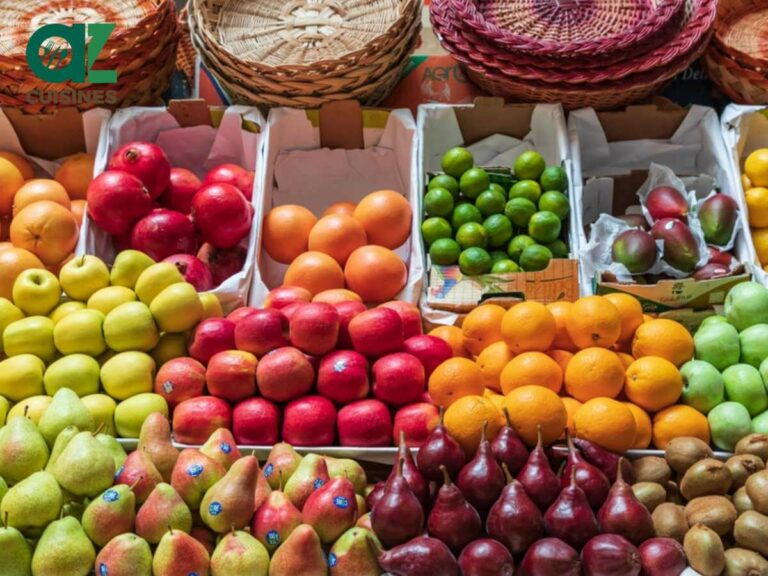
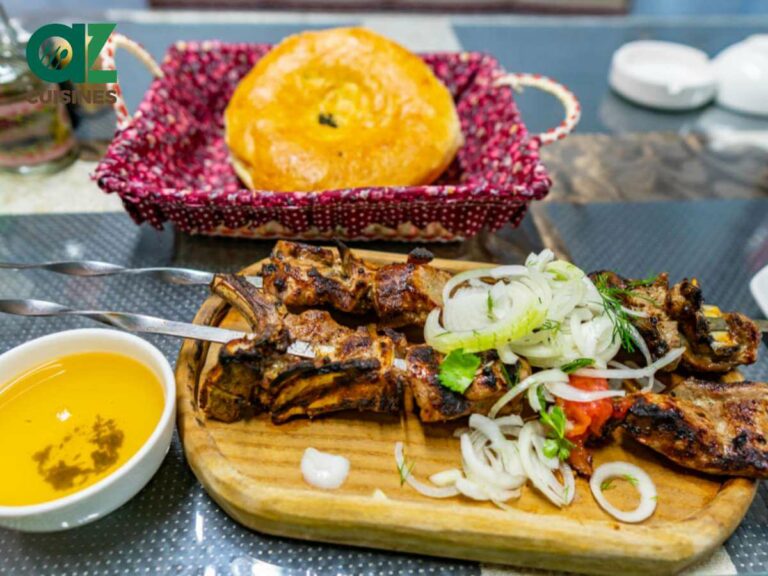

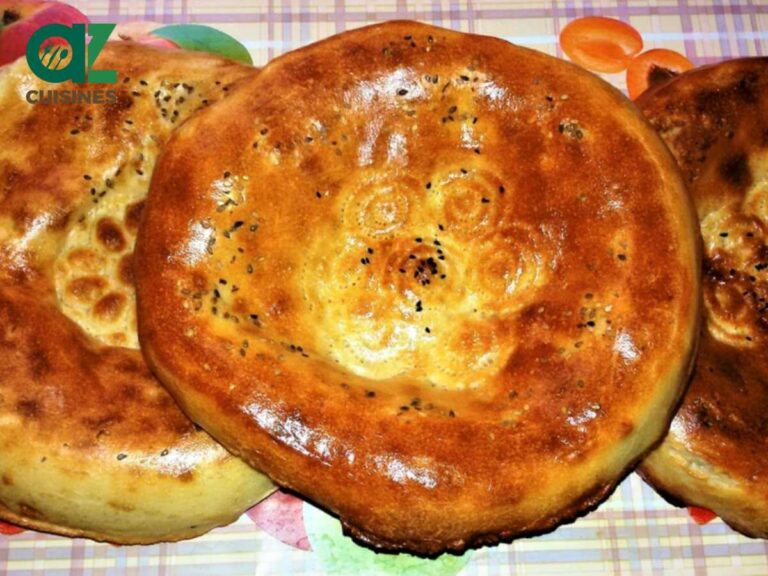
Adam Sam
Senior Food and Drink Editor
Expertise
Food Writer & Recipe Developer, Recipe Tester, Bartender, Cooking-video Maker, Editor In Chief
Education
Adam Sam, an experienced food writer and recipe developer, is passionate about blending diverse culinary traditions, national dishes, and innovative beverages, showcasing his proficiency in both traditional and modern recipe testing.
As the Editor-in-Chief, he elevates culinary content from street food to fine dining, focusing on Western cuisine and types of drinks at azcuisines.com, and is professional in creating engaging cooking videos that simplify complex dishes and ingredients.
His passion for food is evident in his writing, where he uniquely merges various cultures, traditions, and contemporary trends, skillfully combining classic recipes with modern cooking methods.